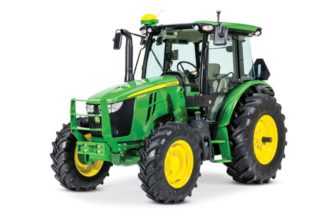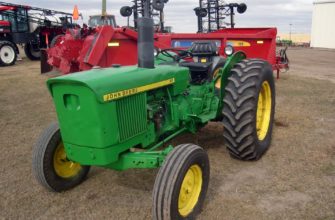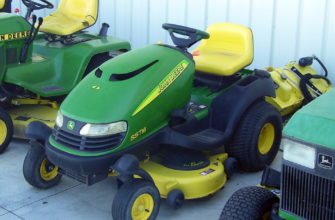The Caterpillar Cat 950 wheel loader is remarkable in that it shows a significant difference in design from its predecessors, and those that it will eventually fully replace. It has been designed to deliver linkage for maximum visibility whether you are using forks, at truck-bed height, or at other heights of use. So what else can we see with the CAT 950K.
Weinhold then asked us to select the parallel-lift mode on the 950K, to note visibility to the coupler hook points, and to raise the boom while tracking visibility to the fork tips from ground level to truck-bed height. The 950K, equipped with the Cat Fusion Coupler, as was the 950H, provided a wide-open view to the coupler’s hook points (where the top of the work tool attaches), as well as to the fork tips in both critical positions.
Linkage – When compared with the IT62H, that the CAT 950K is an upgrade for, the simplicity of the linkage in the newer model is clearly apparent. There is greater tilt force at full tilt; helpful when carrying a heavy loads. When the fork is chosen by the operator parallel lift is provided automatically.
Using lessons learned from telematics data gathered on its 950 wheel loaders, Cat developed the 950 GC as a lower-spec machine designed to appeal to lighter duty operations. Priced 15 percent lower than the full-spec 950M, Cat says the 950 GC excels in stockpiling, load-and-carry, hopper charging and truck loading applications.
The 950K is designed to dig like a conventional Z-bar machine, but also to provide the parallel lift and tilt force of a tool carrier,” says Don Weinhold, product application specialist for Caterpillar’s Global Construction & Infrastructure group. “The design also focuses on visibility when using forks; some machines have good visibility to the tips at ground level, others at truck-bed height—but it’s difficult to get both at the same time. The 950K delivers both—that’s part of the unique character of this linkage design.
For instance, the 950K’s boom arms are configured with less curve at their midpoint; the cross-tube has a flatter oval cross-section and is mounted higher on the arms (toward the cab); and the lift-cylinder rods are pinned higher on the arms and positioned more vertically, with adequate space around the cylinder body to avoid trapping falling debris.
Visibility Down the Boom – The new linkage design is a recognisable Z-bar but different to previous models. The arms of the boom are straighter in the midpoint; with a flatter cross-section ensuring falling debris won’t be trapped around the cylinder body. Everything has been designed with greater visibility the desire, and result.
The bellcrank, which pivots on a thick plate that is integral with the cross-tube casting, is now a heavy fabricated member, versus the single-plate casting used on the 950H. (The bellcrank transfers tilt cylinder motion to the bucket link, causing the link to move in a direction opposite that of the cylinder rod to open and close the bucket.) In addition, the tilt-position sensor has been relocated, hydraulic hoses carefully rerouted, and the windshield-cleaning platform lowered—all in the interest of improved visibility. The overall result is dramatically improved visibility to the coupler and work tool.
Ground-level, grouped service points provide easy maintenance access to the machine’s hydraulics and electrical systems. Gull-wing side panels and a tilt-up rear grill provide access to the radiators, filters and sampling ports while grease fittings for the machine’s difficult-to-reach components are grouped for easy access.
After spending the day with the 950K and its predecessor models in the expert company of our hosts, and after reviewing the numbers resulting from the day’s comparative testing, we left the Peoria Proving Grounds thinking that the new 950K is an extremely versatile, extremely efficient machine with design features that significantly enhance both its productivity and fuel efficiency, as demonstrated by the on-site test results. The 950K and its K-Series companion models should serve well in Caterpillar’s wheel loader range.
Specifications
- Brand:Caterpillar
- Model:Cat 950
- Year since:1966
- Price for sale:$17.000 – $270.000










Can i put a turbo on it? Can it cause damage in the other parts?